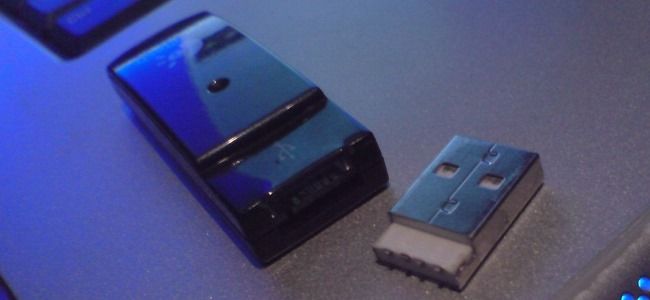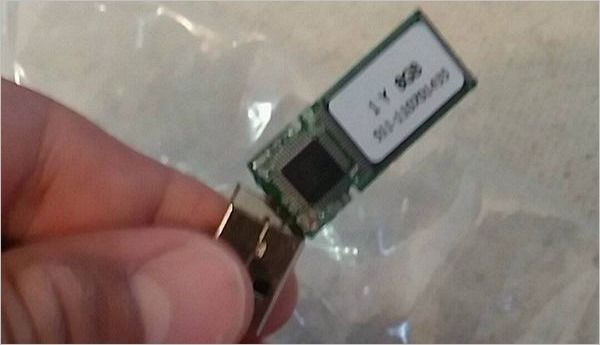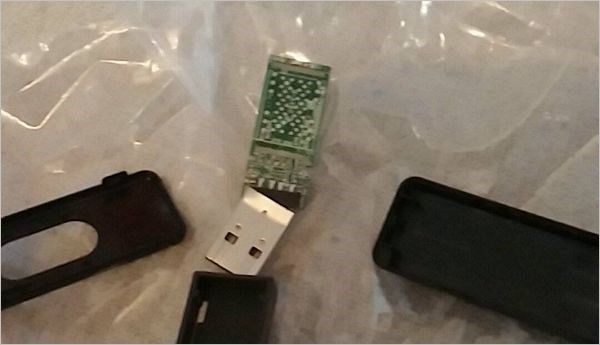Sometimes accidents happen to a USB drive, and you find yourself in a very bad position when your only copy of an important document is on there. When something like this happens, is it possible to fix a physically broken USB drive? Today's SuperUser Q&A post comes to the rescue for a stressed out reader.
Today’s Question & Answer session comes to us courtesy of SuperUser—a subdivision of Stack Exchange, a community-driven grouping of Q&A web sites.
Photo courtesy of Joel Poxton (Flickr).
The Question
SuperUser reader Rasmus Mathiesen wants to know if it is possible to repair a friend's physically broken USB drive:
My friend just wrote to me, all panicked, that he had broken his USB drive with his math homework for tomorrow on it. Yes, no other backups, just that. It looks like this now:
Is there any that way that I can fix this? My thinking is to solder it together, but I want to hear if anybody here has experience with this kind of thing or any tips that will help?
Another option would be seeing if Microsoft Word had saved a copy of the file as a temporary file, but in the places my friend has checked so far, there was nothing to be found.
Is it possible to repair this broken USB drive?
The Answer
SuperUser contributors Chris H, tehwalris, and Annonomus Penguin have the answer for us. First up, Chris H:
That looks fixable with a fine point iron and multi-core solder. You may find it easiest to bridge the gap with wire rather than attempting to put it back into its original shape.
Alternatively, if you do not have a soldering iron, you might be able to strap it up with tape to make contact. I have done this on older hardware, but never on USB drives.
Whatever you do though, do not try to write to the USB drive. With Microsoft Word that means do not open the file from the drive. Copy the file to a computer and open that copy. The reason for this is that if your repair fails during a write, you will lose the file completely, never to be readable again. During a read this should not be true. Word and its auto-save features are not to be trusted to not write to a file when you least expect it.
Too late now, of course, but as I used to tell undergrads when teaching them: Losing your data is a rubbish excuse that will not get you anywhere. You can always (in their case) store it on the network, e-mail it to yourself, and put it on a USB drive.
Followed by the answer from tehwalris:
All the answers so far that have said it was fixable have focused on re-soldering the USB connector. While this could work, the connector is likely broken, finding a replacement is hard, and soldering a connector like that is not so easy for beginners.
A possibly easier way is to take a USB cable (such as an extension cable or phone charger cable) that has a USB A connector on one side (the normal big computer kind like the one on the USB drive), cut off the other end, strip the wires, and solder them to the board.
For the best results, try to keep all the wires a similar length (due to the relatively fast data rate of USB drives). Watch a simple soldering guide first, twist your wire ends, and pre-coat them with solder.
With our final answer from Annonomus Penguin:
First of all, do not let your friend near a USB drive ever again! Apart from that, soldering it is about your only option.
If you have a Raspberry Pi or an old computer that you would not mind frying the port on, you could try carefully plugging it in. As has been mentioned by others, a USB extension cable will give you access to more carefully plug it into the computer. If you are that desperate to risk a perfectly good computer, go ahead and use your main one.
If you can see a break in the connection, do not do it. Worse things could happen than losing your math homework.
As for soldering, it seems like it is only the connector that is damaged. If the PCB is fine, you could do this:
- Take an old USB cable, cut the B end off, and strip the newly exposed wires.
- Take a soldering iron and carefully solder the wires on. If you have an old sock or something similar, I suggest putting that over the main chip in case the iron slips so the chip is not damaged. It is not foolproof, but it is better than nothing.
- Make sure all the connections are not dry joints and that they do not bridge.
- After all the wires are soldered, add a ton of hot glue over it. I would suggest wrapping it around the main board a few times in case you accidentally tug on the wire so it does not come undone. This is just a best practice thing, so is not required.
- Plug it into your friend's computer and cross your fingers.
If it has some sort of read only switch, I would advise you to use it to make sure that you do not corrupt the file.
Have something to add to the explanation? Sound off in the comments. Want to read more answers from other tech-savvy Stack Exchange users? Check out the full discussion thread here.



